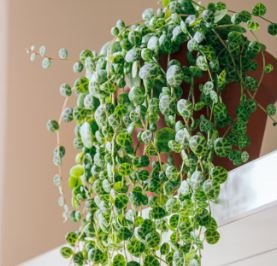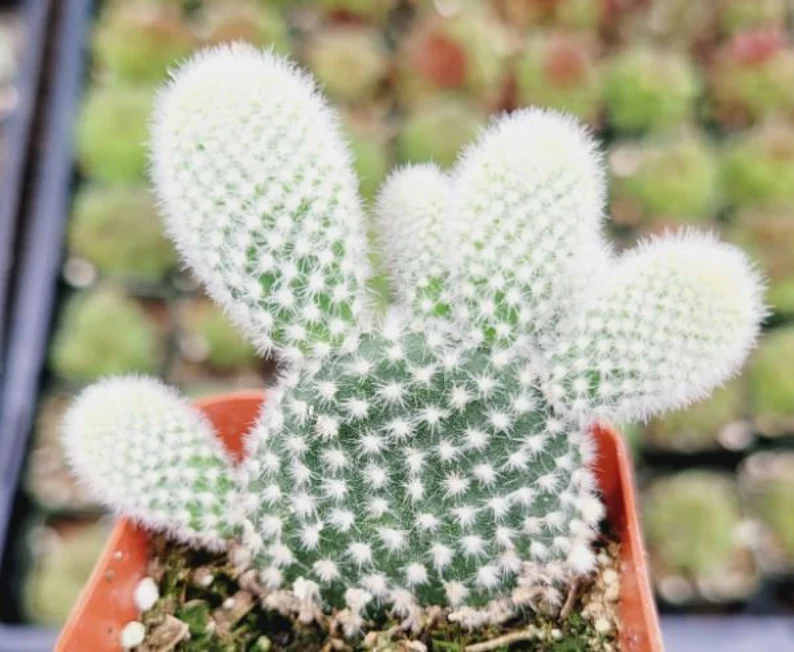Turtles
The “string of turtles” is a popular trailing succulent plant. Its scientific name is Peperomia prostrata. It is also known as the “turtle vine” or “prostrate pepper.”
The string of turtles is named after its unique foliage, which resembles a string of tiny turtles or the patterns on a turtle’s shell. The leaves are small, round, and have intricate patterns in shades of green, silver, and sometimes burgundy.
This plant is native to Brazil and is often grown as a houseplant or in hanging baskets. It is appreciated for its trailing growth habit and low maintenance requirements. The string of turtles prefers bright, indirect light and well-draining soil. It doesn’t require frequent watering and should be allowed to dry out between waterings to prevent overwatering.
Overall, the string of turtles is a lovely and distinctive trailing plant that can be a beautiful addition to your indoor or outdoor garden.
Care Guide
Here are some care tips to help you keep your plant healthy:
- Light: Place your string of turtles in bright, indirect light. It thrives in moderate to high light conditions but should be protected from direct sunlight, especially during the hottest parts of the day.
- Temperature: This plant prefers average room temperatures between 65-75°F (18-24°C). Protect it from extreme cold or hot drafts.
- Watering: Allow the soil to dry out partially between waterings. Overwatering can lead to root rot, so striking a balance is important. Insert your finger into the ground about an inch deep, and water only when it feels dry at that depth. Water thoroughly and let any excess water drain away.
- Humidity: The string of turtles appreciates higher humidity levels, but it can tolerate average household humidity. If the air is particularly dry, consider misting the leaves occasionally or placing a tray with water near the plant to increase humidity.
- Soil: Use a well-draining soil mix suitable for succulents or cacti. You can also add perlite or sand to improve drainage. Avoid heavy or compacted soils.
- Fertilizer: Feed your string of turtle plants with a balanced, water-soluble fertilizer diluted to half-strength. Apply it during the growing season (spring and summer) every 2-4 weeks. Do not fertilize during the dormant period in winter.
- Pruning: If your plant becomes leggy or starts to lose its compact shape, you can trim back the stems. Pruning will encourage branching and promote a fuller appearance.
- Propagation: The string of turtles can be propagated through stem cuttings. Take a cutting with a few nodes and remove the lower leaves. Allow the cutting to dry for a day or two, then place it in a well-draining soil mix. Keep the soil lightly moist until roots develop.
Remember to monitor your plant regularly and adjust care based on its specific needs. With proper care, your string of turtle trailing plants should thrive and delight you with its unique appearance.





